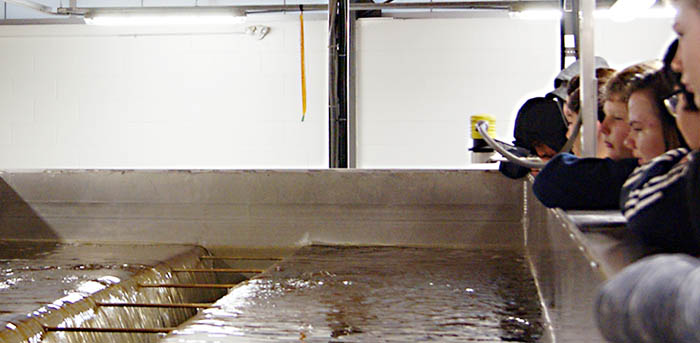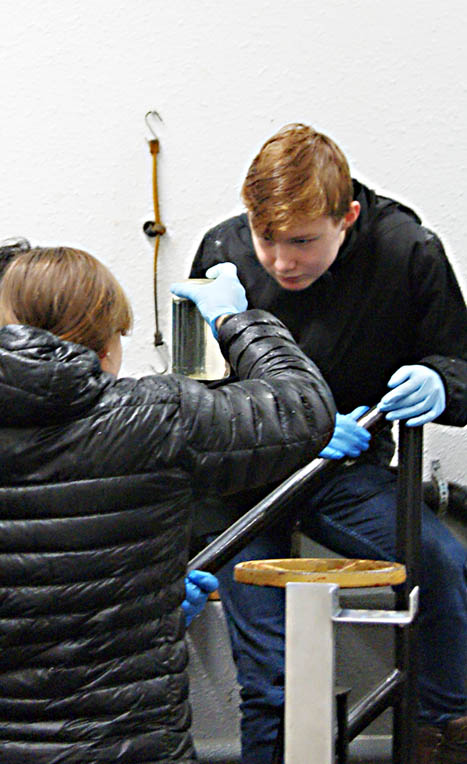
by Lars Sander-Green
This October, Valemount Secondary School students got to know their watershed with a field trip to the municipal water system and wastewater treatment plant. The students, from Ms. Berkenpas Science 9 class, also tested fresh water samples from above the water intake and below the wastewater discharge.
It’s very easy to become disconnected to where our water comes from and where it goes once we’re done with it. We turn on our taps and out it comes. We pull the plug and there it goes. But, contrary to what the conveniences of modern life have led us to believe, there’s much more to it than that.
Enter Know Your Watershed, a watershed education program from the Columbia Basin Trust, administered and delivered by Wildsight. Now in it’s eighth year, with 40 classes across the Columbia Basin, Know Your Watershed gives students an essential overview of their local watershed. New this year is a special focus on the observed and predicted impacts of climate change on our rivers.
In Valemount, long-time Know Your Watershed educator Kim Thorn visited Ms. Berkenpas’ classroom for two sessions of all things water and took students on a field trip to visit the water intake on Swift Creek, the water treatment plant above, the wastewater treatment plant and the discharge site into Starratt Marsh. On the field trip with Public Works manager Trevor Pelletier, students learned first hand how their water gets from the mountains to the faucet – and the return journey back down the pipes, through wastewater treatment and back into the water cycle.
“The students were impressed with the size, capacity and efficiency of the water treatment plant,” says Thorn. “They definitely took notice when staff back-flushed the treatment tanks, to show how many particulates were trapped. None of the students were happy about going into the waste treatment plant,” adds Thorn, “but once there, they were intrigued by the use of tardigrades as an indicator of treatment system function and excited to have a look at the tiny creatures, known as water bears.”
After touring the water system, students tested the chemistry of four water samples in the classroom, one each from above the water intake, two sites below the wastewater discharge and from a local spring. The results: all of the tests showed good to excellent water chemistry.
“Most people rarely think about how their water gets to their tap and where it goes from there,” says Thorn, “but these young people now have a far better understanding and appreciation of the whole process.”




